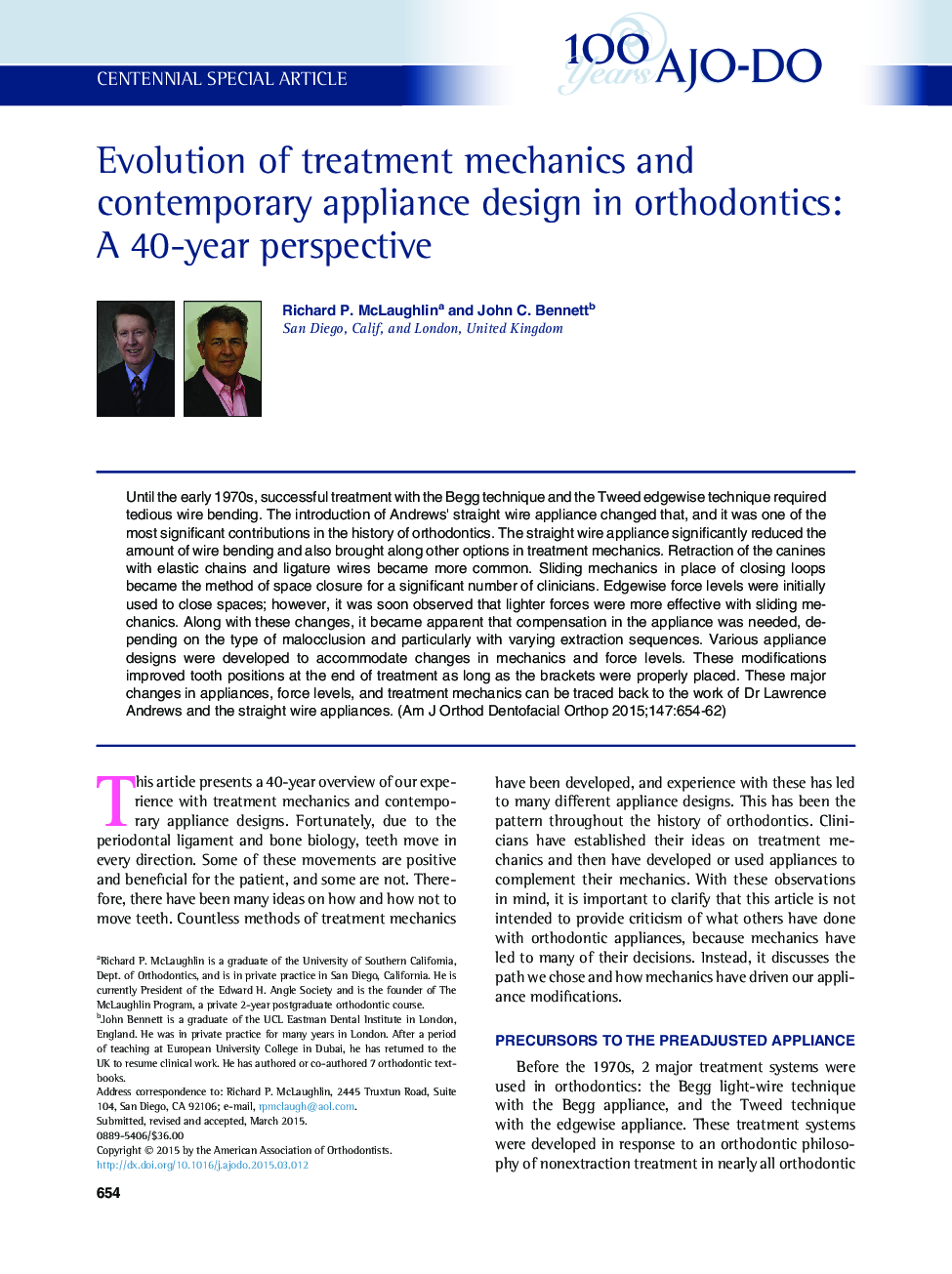| Article ID | Journal | Published Year | Pages | File Type |
|---|---|---|---|---|
| 3116009 | American Journal of Orthodontics and Dentofacial Orthopedics | 2015 | 9 Pages |
•Until the 1970s, the Begg and Tweed edgewise techniques required tedious wire bending.•Andrews' straight wire appliance significantly reduced the need for wire bending.•Undesirable side effects led to further modifications.•Better appliance designs, force levels, treatment mechanics can be traced to Andrews.
Until the early 1970s, successful treatment with the Begg technique and the Tweed edgewise technique required tedious wire bending. The introduction of Andrews' straight wire appliance changed that, and it was one of the most significant contributions in the history of orthodontics. The straight wire appliance significantly reduced the amount of wire bending and also brought along other options in treatment mechanics. Retraction of the canines with elastic chains and ligature wires became more common. Sliding mechanics in place of closing loops became the method of space closure for a significant number of clinicians. Edgewise force levels were initially used to close spaces; however, it was soon observed that lighter forces were more effective with sliding mechanics. Along with these changes, it became apparent that compensation in the appliance was needed, depending on the type of malocclusion and particularly with varying extraction sequences. Various appliance designs were developed to accommodate changes in mechanics and force levels. These modifications improved tooth positions at the end of treatment as long as the brackets were properly placed. These major changes in appliances, force levels, and treatment mechanics can be traced back to the work of Dr Lawrence Andrews and the straight wire appliances.
